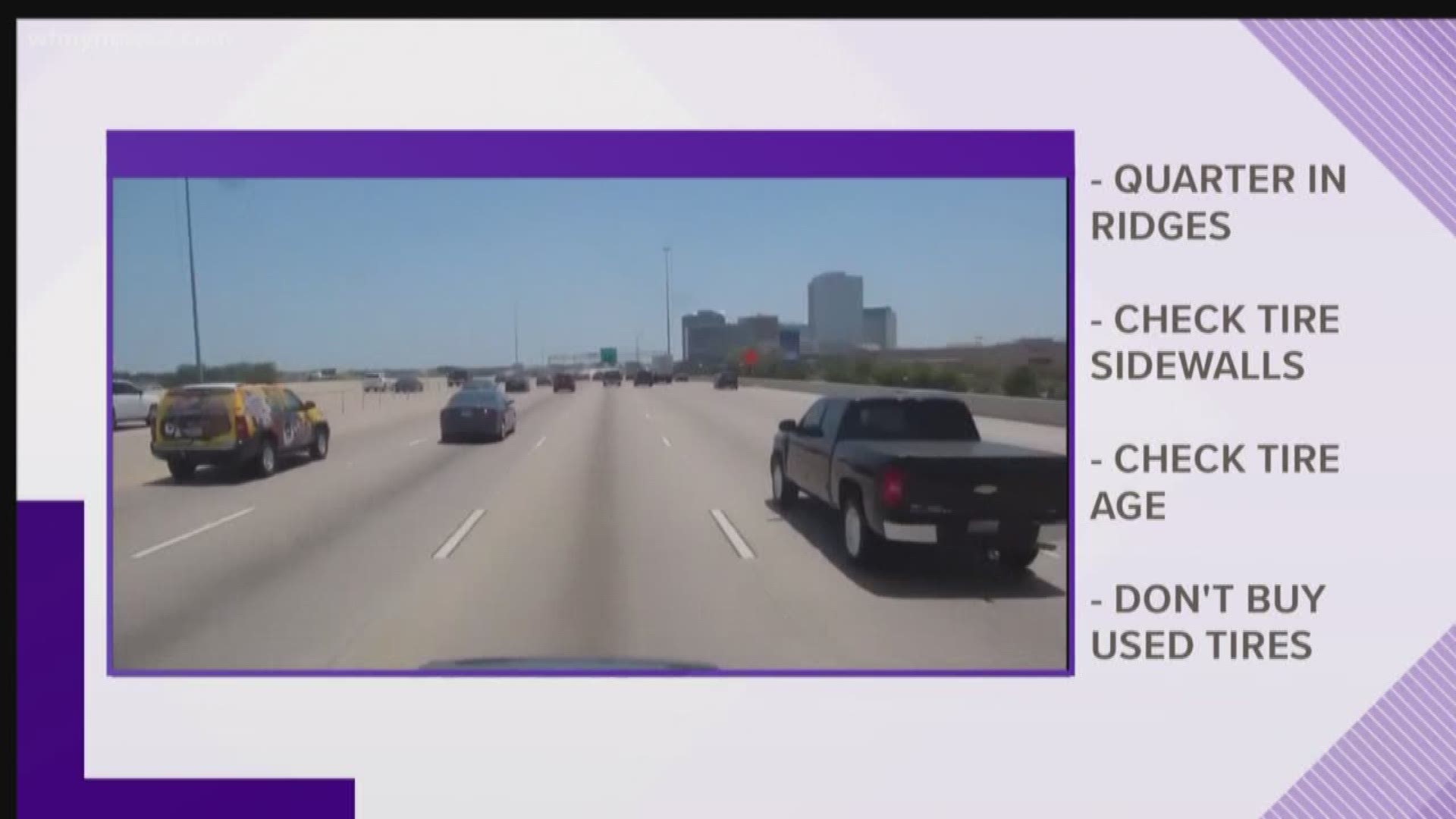A tire check should be part of your routine because a basic inspection can improve your safety and even help boost your fuel economy. To remind motorists about performing this important review, May 21 to 28 has been designated as National Tire Safety Week by the U.S. Tire Manufacturers Association. This year’s theme is “Know Your Roll,” a play on words to describe consumer-targeted tire education.
Consumer Reports encourages those traveling over the long Memorial Day weekend to follow these quick tips. Such do-it-yourself checks should be performed monthly, but it’s especially important to do so before embarking on long driving vacations.
A flat tire or other tire problem can be an inconvenience when you’re far from home, and the heat that can build up in tires over a long drive at high speeds can exacerbate these problems.
Beyond providing a welcome maintenance reminder, Tire Week has inspired tire sales and rebates. If you need replacement tires, be sure to factor the ratings from CR’s extensive tire tests into your decision.
Check Tire Pressure
Proper tire pressure is important because underinflated tires flex more and build up heat that can lead to failure and possibly even an accident.
Underinflated tires are less fuel-efficient and can wear out faster. Tires lose air over time and, consequently, need to be checked and filled periodically. The correct pressure for your tires is usually found on a sticker on the driver’s doorjamb of your car. Consult your owner’s manual for additional information.
You should check pressure when tires are cold, so measure it after the car has been parked for more than 3 hours. If you have a spare tire, check its pressure, too. Pressure should be checked on all tires monthly, not just seasonally.
Don’t rely on your car’s tire-pressure monitoring system to alert you when your tires need air. The system is not a maintenance reminder; it’s designed to alert you that a tire is losing air and needs urgent attention. By the time the TPMS light comes on, your tires are underinflated by 25 percent or more.
Check Tread Depth and Worn Spots
To determine whether your tire has enough tread left or to see whether there’s a wear concern, grab a quarter and a penny.
Place the quarter upside down in a groove on your tire. The distance from the coin’s rim to George Washington’s hairline is about 4⁄32 inch. If you see all of Washington’s head in any one groove where a treadwear indicator appears, you might want to start shopping for new tires while you have some seasonal grip left.
Use a penny to check for uneven wear. That can be a sign of misalignment, improper inflation pressure, or aggressive driving. Any major groove worn to 2⁄32 inch, the distance between the top of Lincoln’s head to the edge on a penny, should warrant tire replacement.
Check Tire Sidewalls
Cuts and bulges in tires can result from encounters with potholes, curbs, and unfriendly objects in the road. Tires should be replaced if you experience one of these abnormalities.
Some tire retailers offer free road-hazard warranties, and it’s something to look for when shopping for tires.
Check the Tires’ Age
Some automobile manufacturers recommend replacing tires after six years even if you haven’t worn them out. CR recommends that any tires more than 10 years old should be replaced, regardless of wear. Every tire has a date code for when it was manufactured. Look for “DOT” followed by several digits on the lower sidewall of your tire. The last four numbers identify when the tire was made. As an example, the 3014 on the tire above indicates that the tire was manufactured in the 30th week of 2014.
Many manufacturers put the date code on only one side of the tire, as required by law. This can mean the date code is on the inboard side of the tire, under the car, making it difficult to read. Inside or outside, check that date code: It’s possible that the tires were in inventory for months or longer before you bought them, so going by your purchase date will provide you with only a rough estimate.
Don't Buy Used Tires
Used tires may look fine at a glance, but they could have compromised durability because of misuse in previous service, such as being driven while overloaded or underinflated, or being driven at excessively high speeds. Tires may also have been improperly repaired or damaged when dismounted from the seller’s wheels.
When buying a used car, check out the tires. If they’re worn, use their condition as bargaining chip in your negotiations. Along with the mileage and condition of the car, ask for service records. You may not know the complete history of the tires, but if the rest of the car has been neglected, chances are the tires have been, too.

